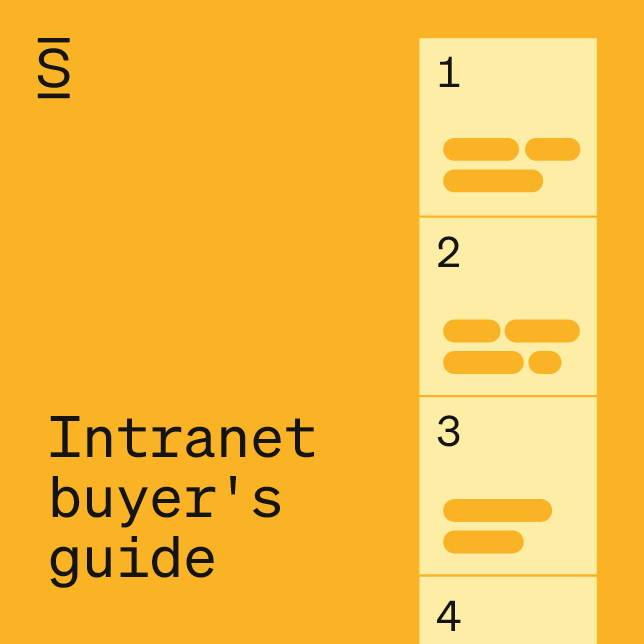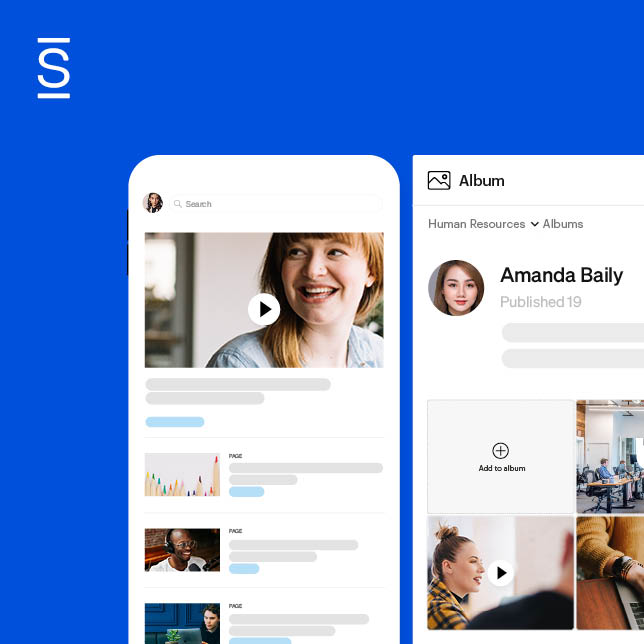This usually sits alongside policies for other digital channels such as email.
A good internal social media policy:
- Gives clarity to employees
- Helps resolve issues if they arise
- Keeps risk-averse stakeholders happy
Here are some practical tips on drafting the policy, related communications and how to make it work:
Don’t allow anonymous posting
In truth, social intranets encounter very few problems with inappropriate posts that result in comments being removed or action being taken. There might only ever be a handful of instances over years of use.
This is mainly because all interactions and contributions on a social intranet are attributed to individual employees. Any inappropriate use can be tracked, seen by everybody and quickly reported. Unlike external social media, which can be plagued by trolls, the fact that there’s no anonymous posting on the social intranet is a huge barrier to misuse. Having all interactions attributed to individuals is the bedrock of a sensible internal social media policy.
Review other companies’ policies
For inspiration on how to frame and communicate your own policy, review the efforts of comparable companies. Speak to your peers in other companies or seek out policies available on the web. Many organizations share their policies as they refer to use of external social media channels, and you can use these as a starting point for your own efforts as well.
Align policies for other digital channels
It’s likely that your organization already has related policies in place covering usage of digital channels including email, external social media, a collaboration platform or even an earlier version of the intranet.
It’s possible you can use these policies as a starting point for the one covering your current social intranet, or you could consider amalgamating them. This latter approach has advantages and disadvantages in that one policy for all channels may be easier to administer, but could lose value if it becomes too generic. In particular, there’s likely to be overlap between policies covering a social intranet and external-facing social media channels.
Develop a detailed policy
Work with a legal expert or your risk team to develop a more detailed version of your social media policy. Yes, this is the one that will feature all the detailed small print and will be written in legal-speak that most employees won’t understand!
Although it might feel like nobody will read it, having this policy really helps as a reference point in the extremely unlikely event that there’s an incident or misunderstanding with an employee. What’s covered in your more detailed policy can also help determine the headline points you need to reference in the more succinct version you communicate to employees.
In your detailed policy you should cover (at minimum):
- Any type of data and information that can’t be shared on your social intranet
- Examples of inappropriate use
- What will happen if there is misuse
Develop a simple version for communicating
You can make a safe assumption that very few employees will read the long, detailed version of your policy. You will need to produce a different version directed at communication and understanding.
This needs to be short, punchy and memorable. For example, use a mnemonic or just five or six bullets to deliver the headline view of what employees need to know. Make sure that your short version doesn’t contradict any point in your detailed version, and that what’s expected of employees is also clear.
Reflect best use in your policy
Communicating your social media policy is not only an opportunity to say what employees must (or must not) do, but also to reflect the best way to use the social intranet and highlight its benefits.
Consider referencing major uses such as networking in your communications, as well as locating experts and supporting communities. Spotlight good practices such as using hashtags, and when to use the intranet instead of email. This will help employees get the most out of their social intranet and support wider efforts to drive adoption.
Trust employees to do the right thing
Social media policies are important, but they need to be delivered in the right way. If policies are communicated in a patronizing way, employees may feel that they’re not trusted. Keep in mind that when your company hired your employees it was done on the basis of trust. In agreeing on a contract, didn’t they sign a document agreeing to levels of professional conduct?
Reflect this in your policy and in how it’s expressed. A light-touch approach to governance tends to be the most effective, although different organizations will have different needs. For example, regulated industries may need to have extra guidelines and processes in place.
Consider using video
Messages about social media usage can be more than a little dry, and as a result they’re easily ignored. Consider delivering the policy in a video format, which may make it stand out more. If possible, you could consider requiring people to watch the video the first time they log into your social intranet.
In general a video should be focused and short. Consider including a recorded message from a recognizable member of your company’s senior management team, footage of your social intranet in action or some continuity with the look and feel of your other communications. Perhaps include subtitles if you use more than one language in your organization.
Seize the opportunity!
It’s a good idea to have a social media usage policy for your intranet. Although it might feel unnecessary, actually it’s a great opportunity to produce memorable communication that provides a clear message to employees on how best to use the social intranet. It also helps to align with company policies and processes related to risk.
Carrying out this step helps everybody to get on with the essential business of using the social intranet to drive engagement, communication, collaboration and process improvement.





